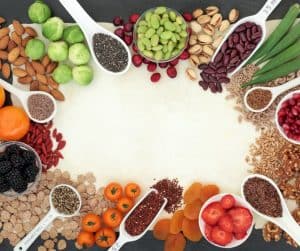
Athletes generate inflammation on a daily basis due to the high demands of training and competition. Inflammation is also triggered as part of injury recovery.
Most people understand inflammation can be localised to specific areas in the body and is associated with symptoms of swelling, redness and pain. When this occurs, most athletes act quickly to reduce the symptoms. Systemic inflammation however is more subtle and often overlooked. When inflammation persists at a cellular level throughout other parts of our body, systemic issues arise such as digestive symptoms, neuro-inflammation, recurrent colds, heart disease, diabetes and autoimmune conditions.
The default setting for many athletes when injured is to reach for pharmaceutical anti-inflammatories (NSAIDs) and obtain help from physical therapies such as physiotherapy, massage, osteopathy and acute treatment principles. These methods are all very helpful, however it is important to remember some of these options such as anti-inflammatory drugs may cause side effects when used repeatedly and for long periods of time. The most common side effects include gastrointestinal upsets, stomach ulcers, blood in urine, liver tenderness and decreased absorption of the key nutrients needed for repair and recovery such as zinc, folate and vitamin C.
Fast-track your injury recovery
The body does an incredible job at repairing and rejuvenating damaged tissue but providing the body with the key nutrients it needs through the diet can further fast-track the process and reduce inflammation.
Top 10 tips for reducing inflammation through the diet
About the Author: Kate Smyth is a Sports naturopath, nutritionist and female-centric running coach. She is the founder of the Athlete Sanctuary- a holistic healthcare clinic for athletes of all levels and sporting codes. Kate has a thirst for knowledge with two bachelor’s and a master’s degree under her belt. She has been involved in sports for many decades and competed for Australia in the Commonwealth Games and Olympic Games marathons with a personal best time of 2 hours 28 minutes. For more information visit https://athletesanctuary.com.au/kate-smyth

Kate Smyth is a sports naturopath, nutritionist and female-centric running coach. She is the founder of the Athlete Sanctuary – a holistic healthcare clinic for athletes of all levels and sporting codes.
Kate has a thirst for knowledge, with two bachelor’s and a master’s degree under her belt. She has been involved in sports for many decades and competed for Australia in the Commonwealth Games and Olympic Games marathons with a personal best time of 2 hours 28 minutes.
Targeted naturopathic care, nutrition and holistic coaching for active individuals.
Normatec Recovery systems- hire and purchase
Birregurra -28-30 Strachan Street,
Torquay- 20 Cantala Drive, Jan Juc
TELEHEALTH – Aus wide, New Zealand, Canada and globally (except US)
Melbourne and Ballarat clinics are currently online